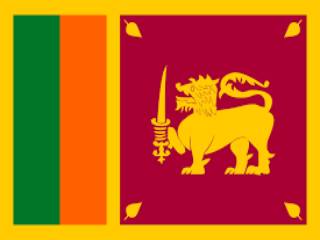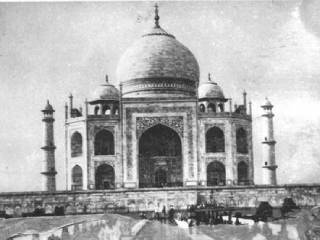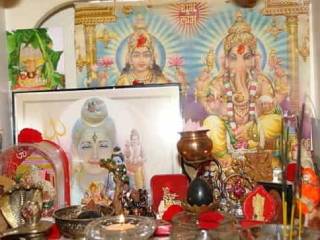Ashwin Krushnapaksha Panchami, Kaliyug Varsha 5116

What concerns Indian nationalists is that in spite of the application of science to questions of history, Nehruvian historians refuse to update materials that go into making history books.
It is good to see Digvijaya Singh of the Congress Party finding time from his life of leisure and party responsibilities to address ideological issues raised by me that arise from the task of re-writing our history text books and de-falsification of the same.
In his article “History, battleground for politics” published in The Hindu on October 10, Mr. Singh alleges that my call for burning Indian history books written by Nehruvian historians, made at a public meeting in Delhi, is part of a larger conspiracy of the Sangh Parivar to devalue the contribution made by Jawaharlal Nehru in our history. My answer to that would be my intention is not to conspire, since my contempt for Nehru is no secret. I am clear that it is important to resize the stature that Nehru enjoys in Indian history in order to match the reality of his achievement.
 Sardar Patel’s contributions
Sardar Patel’s contributions
For decades, the Congress party has used its power to make Nehru appear as a giant rendering all other political personalities small before him. The fact is that the greatest achievements of the past 67 years of our recent history do not belong to Nehru or to his family — the credit for the integration of over 500 independent princely states in 1947-49 by their merger from what then was divided India to make it what it is today is due solely to Sardar Vallabhbhai Patel. After the erstwhile princely state of Jammu and Kashmir was merged with India on October 26, 1947, Nehru completely mishandled the territorial dispute issue by taking it to the U.N. and that too without Cabinet approval. The mess that Kashmir is in today can be attributed to Nehru’s lack of national vision. Yet Sardar Patel was not awarded the Bharat Ratna till 1991 when Chandra Shekhar as Prime Minister and I as his senior-most cabinet minister rectified the omission. Nehru had taken the Bharat Ratna for himself in 1955, the very next year after it was instituted as a national award. As a nation builder, Nehru was a complete failure.
Mr. Singh states in his article that Nehru’s contribution to the freedom struggle under Gandhiji’s leadership is unmatched, and that he was the Mahatma’s chosen person to lead free India. My answer to that would be until 1942 it was C. Rajagopalachari who was the chosen successor but he lost his credibility among the masses due to his acceptance of Jinnah’s demand for Pakistan. Also had Netaji Subhash Chandra Bose returned safely to India after his Japan visit, he would have become the Prime Minister of India.
With Netaji gone, Gandhiji took a vote of Pradesh Congress Committee (PCC) presidents in 1946, and only one of the 16 PCC Presidents voted for Nehru. The other 15 voted for Sardar Patel. But Gandhiji asked Patel to withdraw in favour of Nehru for practical politics — to hasten British departure. History books of the future will record what the practical politics was, when all currently classified files are declassified.
Mr. Singh also states that the RSS-BJP combine and their followers do not have any one of their own who has contributed to the Indian freedom struggle. Hence they seek to appropriate Congress leaders as their own. Even “Chacha” Nehru and Indiraji have been owned by Prime Minister Modi recently, he says. My answer to that would be that Mr. Modi’s message that both Nehru and Indira’s birthdays should be celebrated by sweeping garbage out of the country should be appreciated in all its subtlety before he goes on to rejoice the transformation of Mr. Modi.
Of course, if Mr. Singh has digested the historical concoction handed down to us by Macaulay’s intellectual progenies, it would be difficult for him to name any one belonging to the Hindutva fraternity who had contributed to our independence struggle. Mr. Singh may, therefore, not have heard of Veer Savarkar who changed the outlook of generations of Indians with his book The Indian War of Independence — 1857. He might not have heard either of his great sacrifices in Andaman jail or his heroic escape from the British in Europe. Nor would he know about Hemu Vikramaditya or the great renaissance of the Vijayanagar Empire or the thorough beating the third Caliphate armies received on Rajasthan border at the hands of the Gujarat Prajapati dynasty and the Maharashtra-Andhra Chalukya Empire.
Lessons in history
Mr. Singh says that Mr. Modi is trying hard to distance himself from the hardcore religious and fundamentalist ideology in which he had been trained and associated with from early on. But he later says with mixed metaphor “Can a leopard conceal its spots?” So he fatuously prescribes how Mr. Modi should “tackle people like Mr. Swamy and other fringe elements” in order to emerge as a “true national leader.” In response, all I would say is look at how Mr. Singh tutored Rahul Gandhi to be a national leader and what it led to… The Lok Sabha election result of 2014 is a testimony to that.
What really concerns nationalists in India is that in spite of the application of science to questions of history, Nehruvian historians are refusing to update and review the materials that go into making history books. The Aryan-Dravidian race theory has been demolished by recent researches in genetics based on DNA studies. It has been established that most Indians have the same DNA profile irrespective of caste, religion or region. Yet we find our text books talking about India being multiethnic.
The Sarasvati River had been called mythical by historians for the last 200 years. But now with the help of laser science it has been possible to locate the Vedic river underground and has now opened it up. Dwarka, the city of Lord Krishna, was similarly declared to be mythical. But under the dynamic leadership of Dr. S.R. Rao of the Archaeological Survey of India, Dwarka city was found under the ocean of the Gujarat coast. These discoveries find no reflection in our history textbooks.
The chronology that we are made to follow in history textbooks of today is such that Hindu civilisation is shown to arrive after the beginnings of the Judeo-Christian civilisation. Over 2,000 years of Hindu history has been truncated to zero for this purpose. Hence, just as Gandhiji started a revolution in India by urging the masses to burn British clothes, wear Khadi, and boycott British goods, we nationalists too advocate clarity with regards to our national identity by burning history books concocted by British imperialists.
Source : The Hindu

 Mizoram: EC accepts Christians’ demand to defer counting on Sunday, but what if Hindus had made a similar demand?
Mizoram: EC accepts Christians’ demand to defer counting on Sunday, but what if Hindus had made a similar demand? Sign Petition : Immediately repeal the draconian and unconstitutional ‘The Waqf Act, 1995’
Sign Petition : Immediately repeal the draconian and unconstitutional ‘The Waqf Act, 1995’ Shriram : Sri Lanka’s saviour
Shriram : Sri Lanka’s saviour Why it is so cool to malign Hindu gods and goddesses, but it may not be that easy now
Why it is so cool to malign Hindu gods and goddesses, but it may not be that easy now Shocking Truth of Taj Mahal exposed by Late Pujya P. N. Oak
Shocking Truth of Taj Mahal exposed by Late Pujya P. N. Oak How are Hindus treated in states where they are in a minority?
How are Hindus treated in states where they are in a minority?